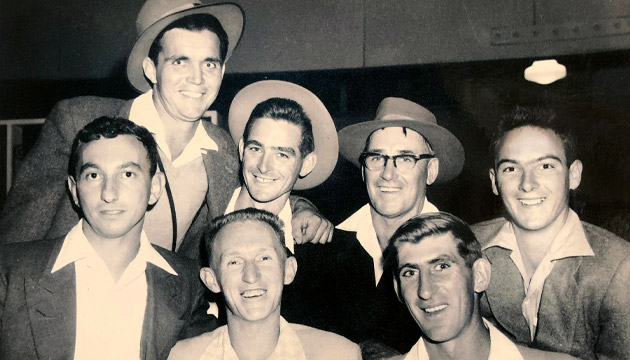In 1958 a small band of blokes from the Riverina took more than 1500 sheep from Griffith to Israel via the Indian Ocean.
Story Mark Muller
Noel Townsend lifts a beer to his lips and takes a sip. It’s not bad, though a bit different to what he’s used to. With him in the little cafe are his uncle Claude Anderson and mate Col Woodbridge. It’s Noel’s 17th birthday and the three fellas from the Riverina are having a small celebration to mark the occasion. Soon a waiter comes over, drawn by their voices. “Are you Australians?” he asks, “You sound like Australians! I lived there – I was in an internment camp near Hell during the war!” The cafe is in Tel Aviv, Israel. The year is 1958.
More than six decades later Noel Townsend chuckles at the dining table of his home in Griffith, NSW. “I knew about Hay and Booligal,” he says through a grin, “but I had to go to Israel to learn about Hell!”
So how did they get there, and what were they doing? At the time, Claude Anderson was manager of Carmel station, owned by Palestinian-born Australian medico Dr Solomon Goldberg. Goldberg had come to Australia when he was 10. When he visited Israel as a 49-year-old in 1950, he found that meat was prohibitively expensive, and the textile industry was flat. He felt both a duty and an opportunity existed, and upon his return to Australia began a breeding program on Carmel with a view to exporting sheep to Israel.
Goldberg leased a 2000-acre (800-hectare) parcel of land from Israel’s Jewish National Fund, 10 kilometres off the Gaza Strip near the community of Dorot, and set about establishing a sheep operation there. In 1954, according to the Department of Foreign Affairs and Trade, Goldberg “brought his first consignment of 120 Corriedale sheep from Australia … The Corriedales, bred especially for their wool and meat, were trucked to Adelaide, from where they were shipped to Singapore, and from there flown to Israel via Calcutta, Karachi and Bahrain. (A direct shipment was not possible due to the Arab shipping blockade policy under which ships bound for Israel were refused passage through the Suez Canal and the Straits of Tiran).” The experiment was a proof-of-concept, but the scale was unfeasible.
Skip forward a few years, and circumstances had changed. Sea access through the Gulf of Aqaba to the Israeli port of Eilat became possible. Goldberg advised Claude Anderson to get a mob of more than 1500 sheep ready, chartered the Danish ice breaker Thala Dan (fresh from an Antarctic expedition) and lined up his contacts in Israel.
“Claude was married to mum’s sister,” Noel says. “I’d moved in with them to go to school in Griffith. After that I stayed there and worked for him. In January 1958 I came in from work and Claude says to me, ‘If your mum and dad say it’s ok, I’m going to take you to Israel’.”
In all, 1514 sheep – mostly Corriedales, but also some Border Leicesters and Dorsets – were mustered at the Griffith rail yards, loaded onto a train and transported to Sydney, where they were loaded into the three holds of the Thala Dan. Goldberg had outlaid the equivalent of $500,000 to charter the ship and fit pens, and insured the sheep for 80 pounds a head – a total of around $3.8 million in today’s money.
“We had five kelpie pups, too,” Noel says. “Also – and it struck us as a bit strange – we had two kangaroos, two emus, and five bandicoots with us!” These native animals, it turned out, were a gift from Taronga Zoo to the zoo in Jerusalem. According to Sydney’s Herald Sun, the shipment was at the time “the largest consignment [ever] to leave Australia on the hoof”.
This story excerpt is from Issue #126
Outback Magazine: Aug/Sep 2019










